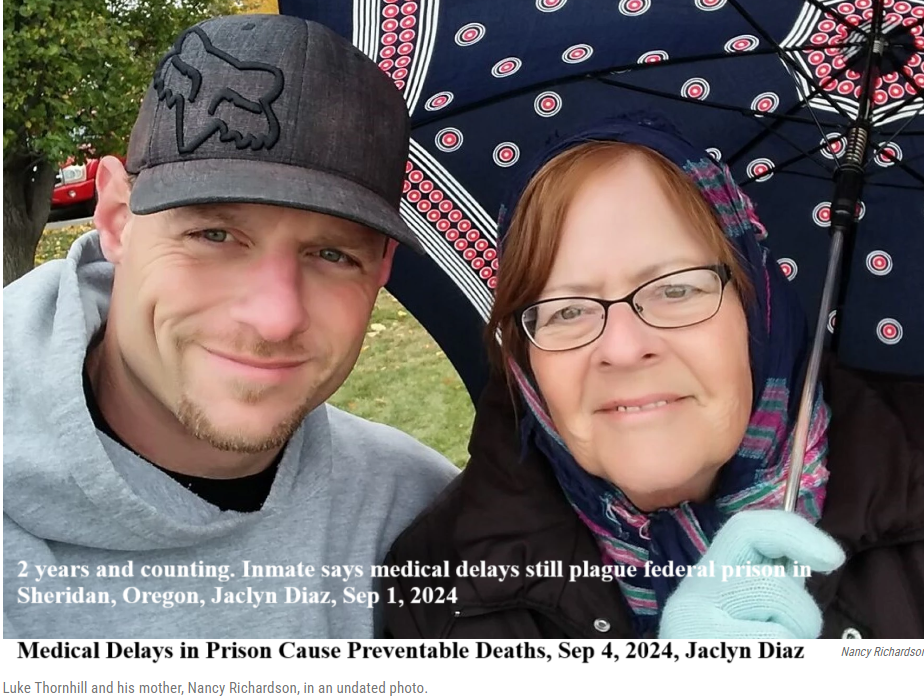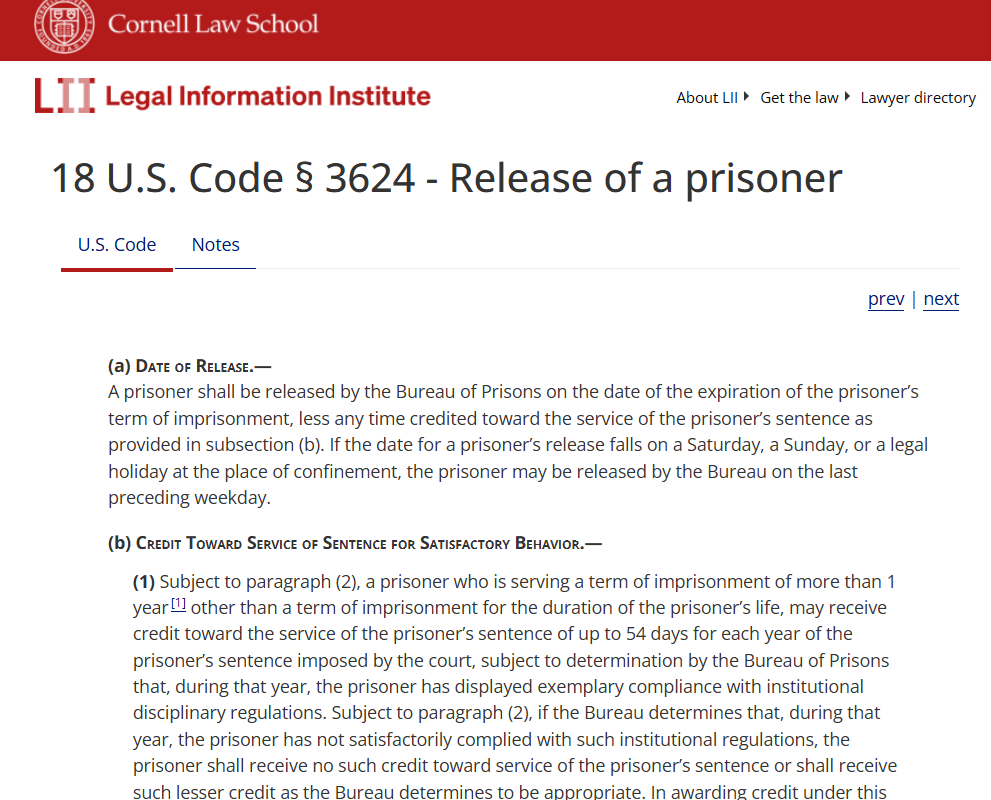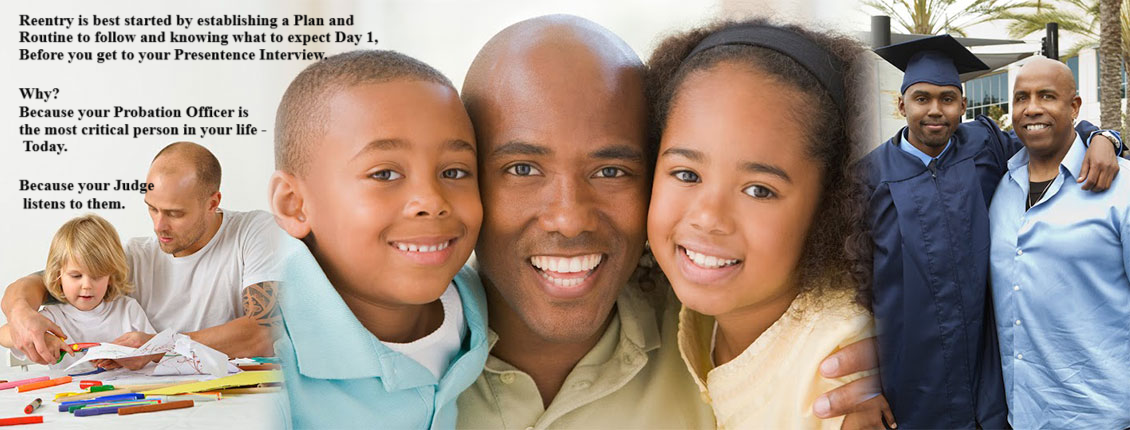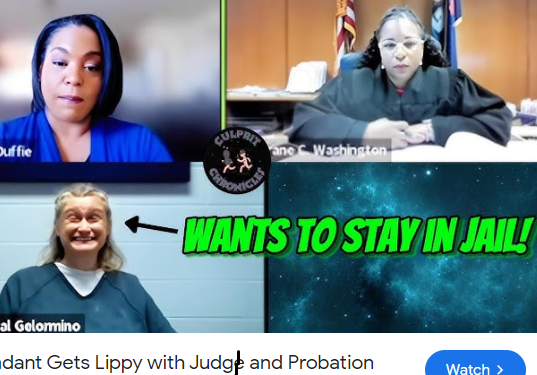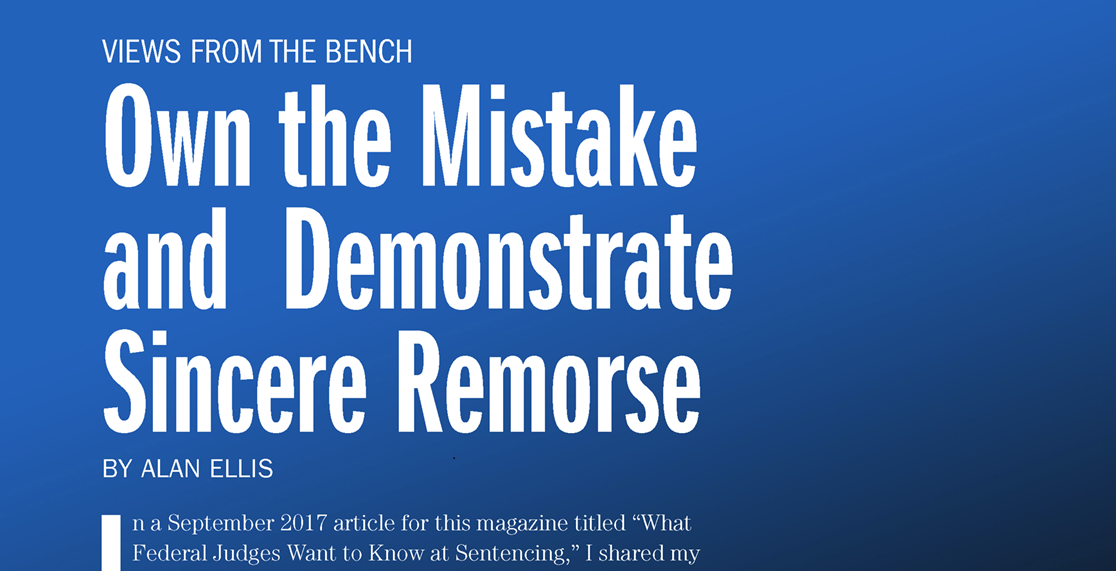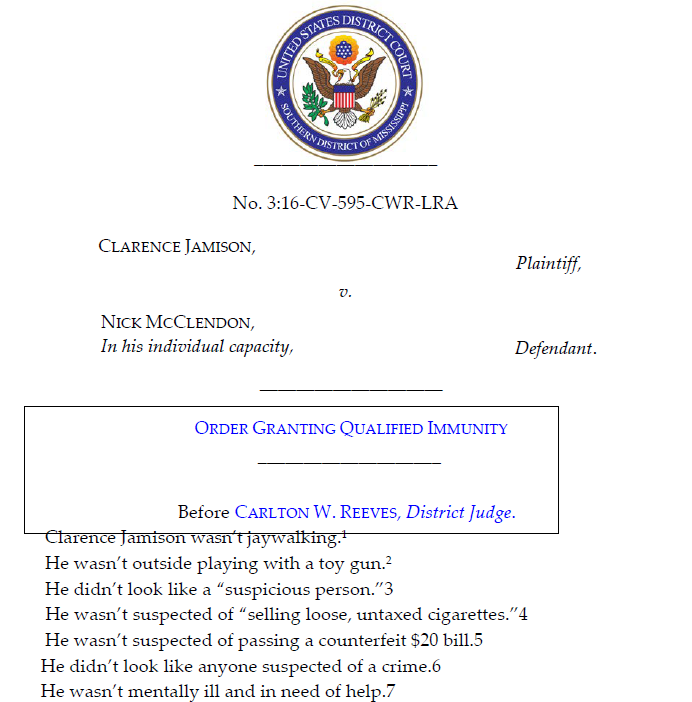Completed Courses in Kinesiology, Chemistry, Algebra, and English * In January 2025, four courageous female inmates from SCP Victorville embarked on a transformative journey by attending community college. As the first federal inmates to step into a college environment outside of a
Read More
OIG IDENTIFIES STAFFING SHORTAGES IN HEALTHCARE SERVICES, RESULTS: ‘MEDICAL-CARE DELAYED OR DENIED.’
2/2024, Evaluation of Issues Surrounding Inmate Deaths in Federal BOP Institutions9/26/2024, Inspection of the Federal Bureau of Prisons’ Federal Correctional Institution Lewisburg a In March 2023, Thornhill received an 80-month federal prison sentence for drug-related offenses. While serving time in Idaho in
Read More
FACING THE DOJ USUALLY DOESN’T HAVE AN “UP” SIDE. ONE HOPES HIS LAWYERS ARE THERE TO PROVIDE HONEST AND POSSIBLY DIFFICULT TRUTHS. SO FAR COUNSEL APPEARS TO BE DEFENDING HIS ACTIONS (i.e., SELLING OFF ASSETS, SURRENDERING TO THE COURT), WHICH IS THEIR
Read More
THEIR SAFETY IS PART OF YOUR SENTENCING AND PLACEMENT CALCULATION. * – THE SEX OFFENDER IN FEDERAL PRISON. For issues pertinent to defense strategy, consideration should be given to your client’s placement in preparation for their Presentence Interview. It is important for
Read More
ACLU Sues Bureau of Prisons for Keeping People in Prison Longer Than the Law Allows, 12/20/2024 WE’RE ALL IN AGREEMENT THAT THOUSANDS ARE BEING KEPT BEYOND THEIR PRD. WHAT CAN BE DONE: (3)Types.—A Prisoner could be placed in one of these three
Read More
…WHAT WILL YOUR ANSWER BE? IT SEEMS PREMATURE TO THINK ABOUT THIS TODAY – TAKING THAT FIRST STEP, IS A STEP IN THE RIGHT DIRECTION. A NO GUARANTEE’S, ESPECIALLY IN PRISON I’m Dr. Marc Blatstein. I’ve been where you are and am
Read More
YOUR PROBATION OFFICER DURING YOUR INTERVIEW OR YOUR JUDGE AT SENTENCING? YOU CONTROL YOUR FUTURE. _____________ WHO DO YOU NEED ON YOUR SIDE? IS IT YOUR PROBATION OFFICER AT YOUR INTERVIEW (PSI) OR YOUR JUDGE? I’m Dr. Marc Blatstein. I’ve been where
Read More
JUDGES UNDERSTAND THAT CRIMES DON’T HAPPEN IN A VACUUM – ONLY ‘YOU’ CAN SHARE YOUR STORY. INDICTED AND FACING PRISON. I’m Dr. Marc Blatstein. I’ve been where your clients are and am here to help them on their journey. With work, I
Read More
WHEN QUALIFIED IMMUNITY IS ABUSED, A VIEW FROM SOMEONE OUTSIDE OF THE JUDICIAL SPACE. I’m Dr. Marc Blatstein. With work, I got my license reinstated and my career back. Judge CARLTON W. REEVES: ORDER GRANTING QUALIFIED IMMUNITY.pdf or WHEN QUALIFIED IMMUNITY IS
Read More
WHILE RARE, IT CAN HAPPEN. RESPECT. When dealing with violence, it is crucial to empower yourself by understanding the power of and prioritizing the need for respect. Respect has universal value, forming the bedrock of positive interactions. Part of its power is that
Read More



